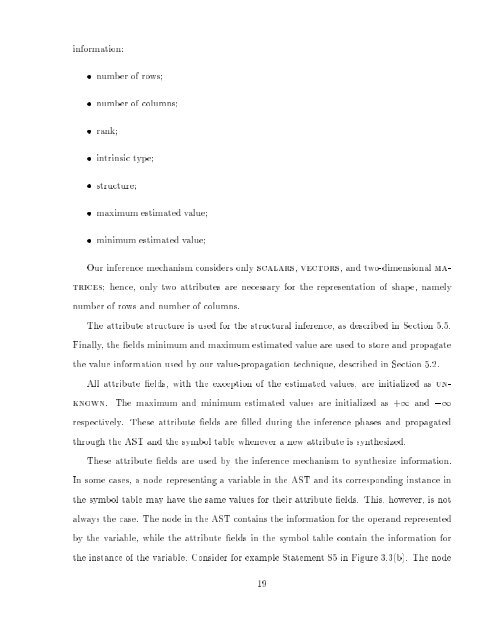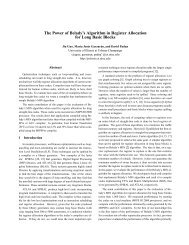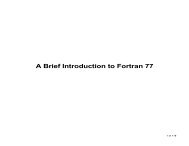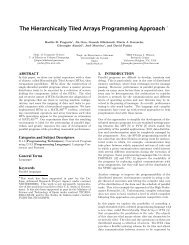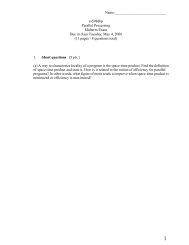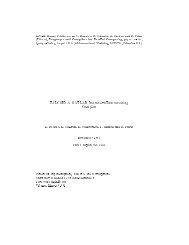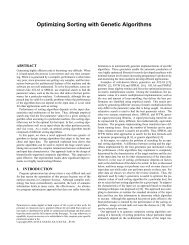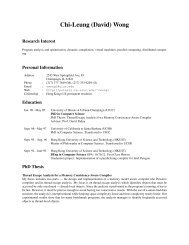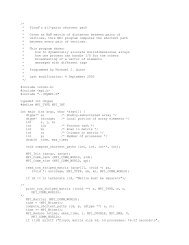COMPILER TECHNIQUES FOR MATLAB PROGRAMS ... - CiteSeerX
COMPILER TECHNIQUES FOR MATLAB PROGRAMS ... - CiteSeerX
COMPILER TECHNIQUES FOR MATLAB PROGRAMS ... - CiteSeerX
Create successful ePaper yourself
Turn your PDF publications into a flip-book with our unique Google optimized e-Paper software.
information:<br />
number of rows<br />
number of columns<br />
rank<br />
intrinsic type<br />
structure<br />
maximum estimated value<br />
minimum estimated value<br />
Our inference mechanism considers only scalars, vectors, andtwo-dimensional matrices<br />
hence, only two attributes are necessary for the representation of shape, namely<br />
number of rows and number of columns.<br />
The attribute structure is used for the structural inference, as described in Section 5.5.<br />
Finally, the elds minimum and maximum estimated value are used to store and propagate<br />
the value information used by ourvalue-propagation technique, described in Section 5.2.<br />
All attribute elds, with the exception of the estimated values, are initialized as unknown.<br />
The maximum and minimum estimated values are initialized as +1 and ;1<br />
respectively. These attribute elds are lled during the inference phases and propagated<br />
through the AST and the symbol table whenever a new attribute is synthesized.<br />
These attribute elds are used by the inference mechanism to synthesize information.<br />
In some cases, a node representing a variable in the AST and its corresponding instance in<br />
the symbol table may have the same values for their attribute elds. This, however, is not<br />
always the case. The node in the AST contains the information for the operand represented<br />
by the variable, while the attribute elds in the symbol table contain the information for<br />
the instance of the variable. Consider for example Statement S5 in Figure 3.3(b). The node<br />
19


